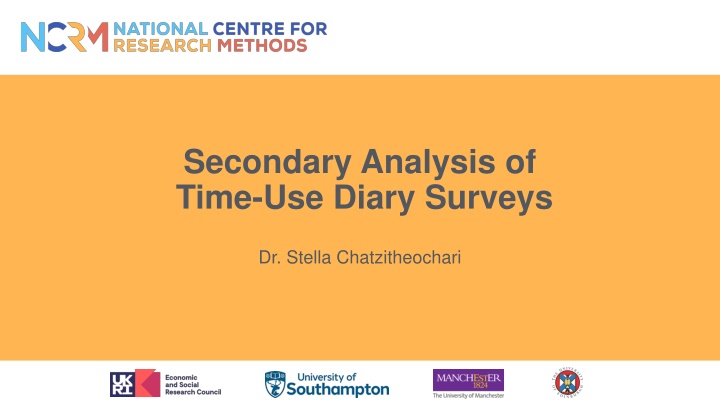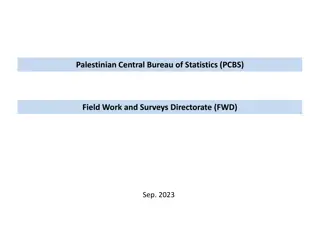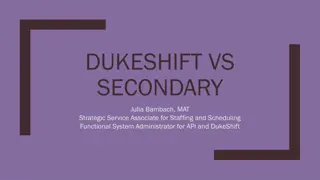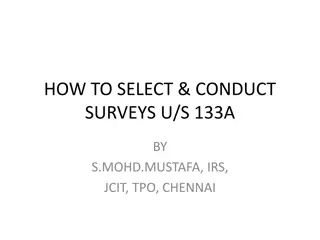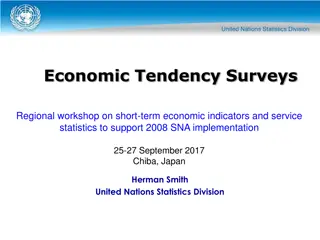Secondary Analysis of Time-Use Diary Surveys
Time-use diary surveys provide rich information on activity levels and everyday life, but come with challenges such as respondent burden and data quality issues. This analysis delves into the availability of variables, construction of variables, surveyed days, respondent burden, and data availability in nationally-representative time-use data collection.
Download Presentation

Please find below an Image/Link to download the presentation.
The content on the website is provided AS IS for your information and personal use only. It may not be sold, licensed, or shared on other websites without obtaining consent from the author.If you encounter any issues during the download, it is possible that the publisher has removed the file from their server.
You are allowed to download the files provided on this website for personal or commercial use, subject to the condition that they are used lawfully. All files are the property of their respective owners.
The content on the website is provided AS IS for your information and personal use only. It may not be sold, licensed, or shared on other websites without obtaining consent from the author.
E N D
Presentation Transcript
Secondary Analysis of Time-Use Diary Surveys Dr. Stella Chatzitheochari
Variable Availability Time Diary Individual/Family Questionnaires Rich information surrounding activity levels and everyday life (duration, timing, sequence, co- presence, location, affect, etc.) As time diary instruments are very burdensome for respondents, individual/family questionnaires that accompany them tend to be fairly light it is rare to find a full set of independent variables relevant to one s study
Construction of Variables from Time-Use Diary Instrument Complexity of data management to conduct analyses that go beyond duration of activities e.g. sequencing, episodes, time fragmentation measures Key measures are readily available in deposits (e.g. duration, number of episodes) Technical reports include coding instructions Resources from Centre for Time Use Research: https://timeuse.org/analysing-time- use-data
Surveyed days and intra-individual variation Balance between sufficient time coverage and reasonable response burden (usually one weekday and one weekend day) Effect of the surveyed time period or actual intra- personal variation? Examination of data quality variables that accompany the diary - was it a typical day? Use of survey estimates on participation in longer- term activities to cross-validate data
Respondent Burden and Data Quality Low response rate due to burdensome diary completion task, so analyses of missing patterns essential Attention to item-missingness too often respondents do not fill in contextual columns, what does this mean? Literature on non-response largely suggests that it is not linked to standard sociodemographic variables time-use researchers are interested in
Data Availability Nationally-representative time-use data collection not very frequent in UK/Europe not as detailed trend analyses as one would hope for Cross nationally comparisons time periods do not always align This is largely due to the high cost of time-use diary surveys However, new modes of data collection (app, web) may change this
